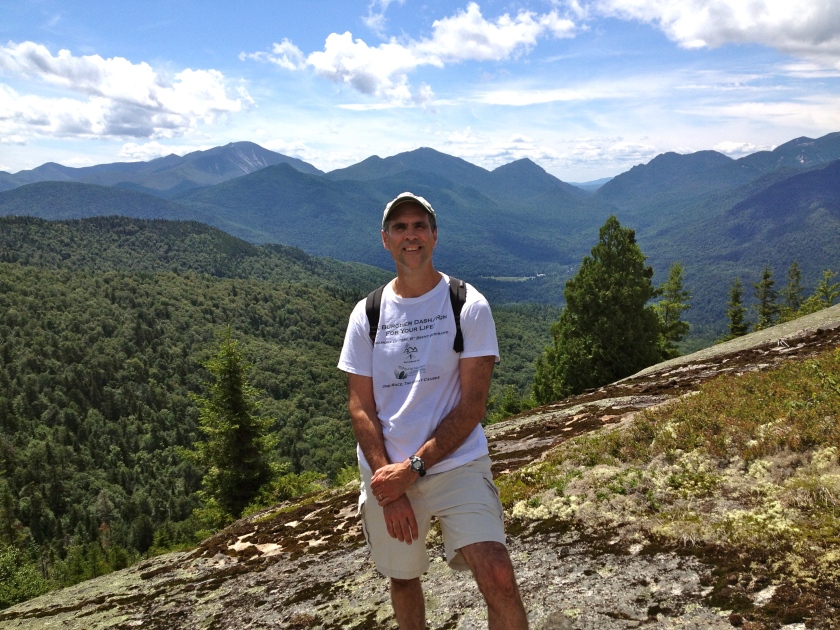“Look at the beauty!” my Sicilian grandmother used to exclaim whenever we were vacationing or doing a day trip away from her home in Jamaica, New York City. Whether it be Long Island’s Jones Beach or Masten Lake in Upstate New York, Lucia loved to be in nature, and she passed that love down to her children and grandchildren. Yesterday’s hike with my wife along Mossey Cascade Brook and up Hopkins Mountain in the Keene Valley region of the Adirondacks was the perfect reminder of just how important our stewardship of Mother Earth is to our mental, spiritual, and physical well-being. The challenge I dwelled on at the summit while munching on a handful of wild blueberries was how to cultivate a sense of environmental stewardship with our students.
Years ago a colleague and I had a grand idea: We’d create a school curriculum entirely built around stewardship. Students would first learn about their responsibilities to care for self in the areas of mind, body and spirit. We’d then extend the concept to care of one’s family, immediate and extended. Stewardship would then broaden to that of the region, state, and nation. And last but not least, our curriculum would lead to stewardship of our planet. Students would learn how history, technology, population growth, religion, etc all impact directly or indirectly, the theme of stewardship. Okay, we definitely were thinking way out of the box. But seriously, how do we help our students appreciate the beauty, magnificence, and fragility of our environment? How do we instill the values and beliefs that will help preserve this beautiful planet and its awe-inspiring diversity of life for generations to come?
If it’s true what gets measured gets taught, then one likely route is through the Common Core Learning Standards (CCLS). Let’s take literacy as an example. From the introduction (p. 2): To be ready for college, workforce training, and life in a technological society, students need the ability to gather, comprehend, evaluate, synthesize, and report on information and ideas, to conduct original research in order to answer questions or solve problems, and to analyze and create a high volume and extensive range of print and nonprint texts in media forms old and new. The need to conduct research and to produce and consume media is embedded into every aspect of today’s curriculum. In like fashion, research and media skills and understandings are embedded throughout the Standards rather than treated in a separate section. What a lever to teach such a rich and meaningful concept of environmental stewardship through required standards for English Language Arts and Literacy!
Truly, where there’s a will, there’s a way. By looking carefully at the Common Core Learning Standards, one can find many avenues to teach rigorous and highly relevant concepts such as environmental stewardship while meeting ALL the CCLS standards. Ultimately, it comes down to values. How much value do we put on environmental issues? On biodiversity? On climate change? On clean water? On alternative energies?……. Through the Common Core Learning Standards, we have an opportunity to graduate students with the capacity to think deeply and well about important issues, and to do so in spite of the constant noise from our media. If we think about the environment our children’s children will inherit, there’s no question we must work hard and diligently to preserve this lovely planet we inherited from our ancestors.
BTW, this week I begin my Climate Reality Leadership Corp training. I’ll keep you posted.
